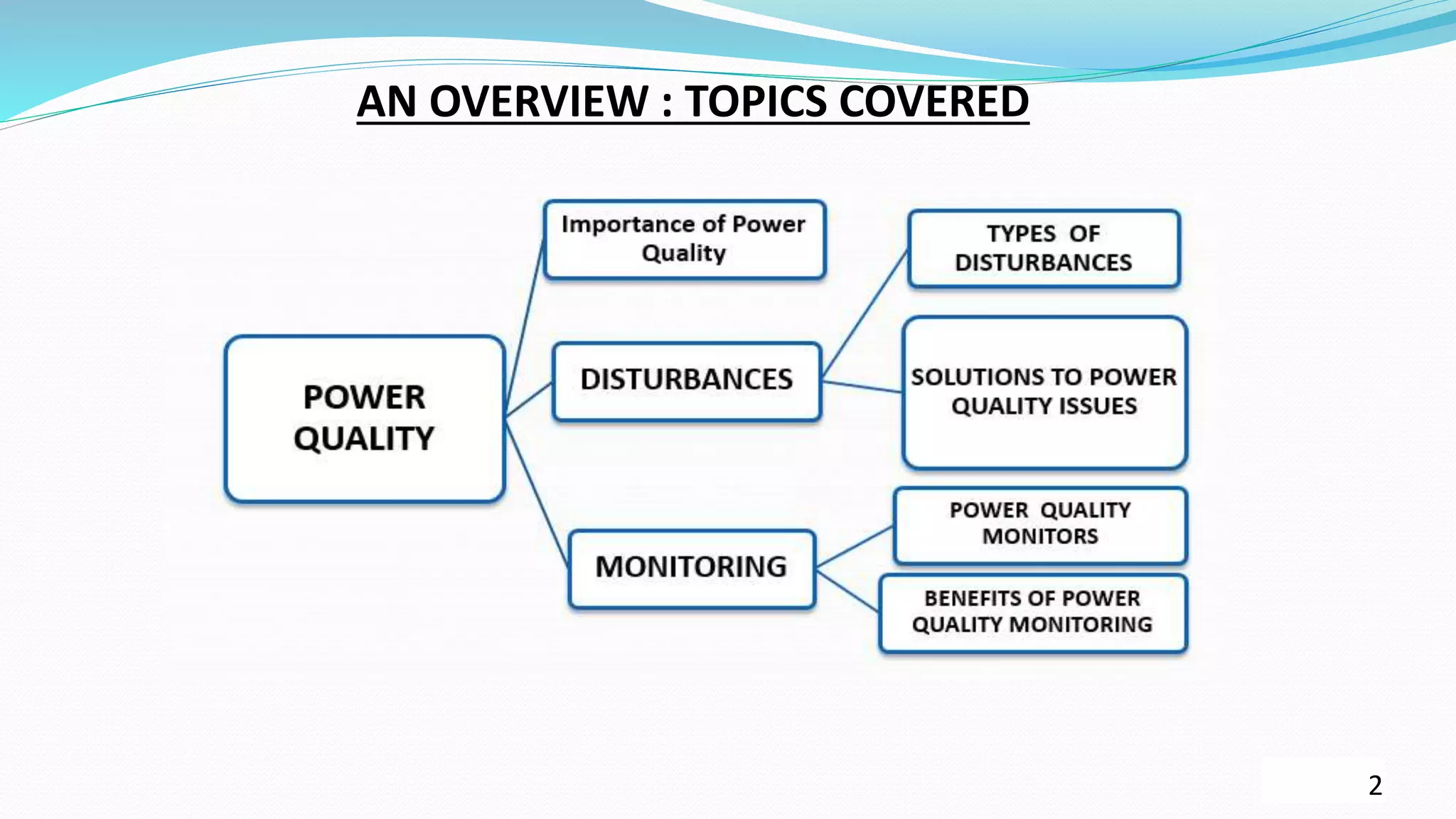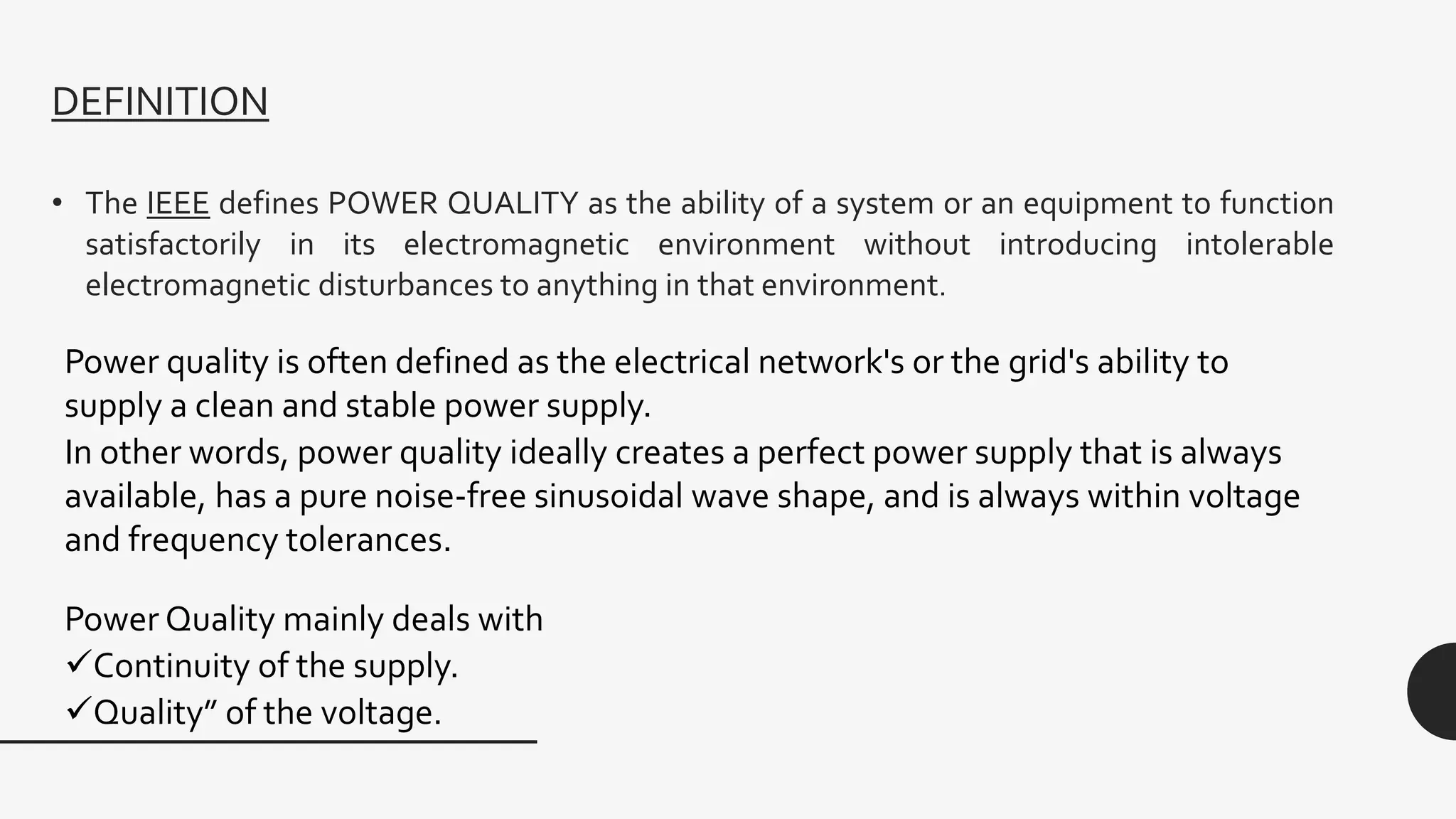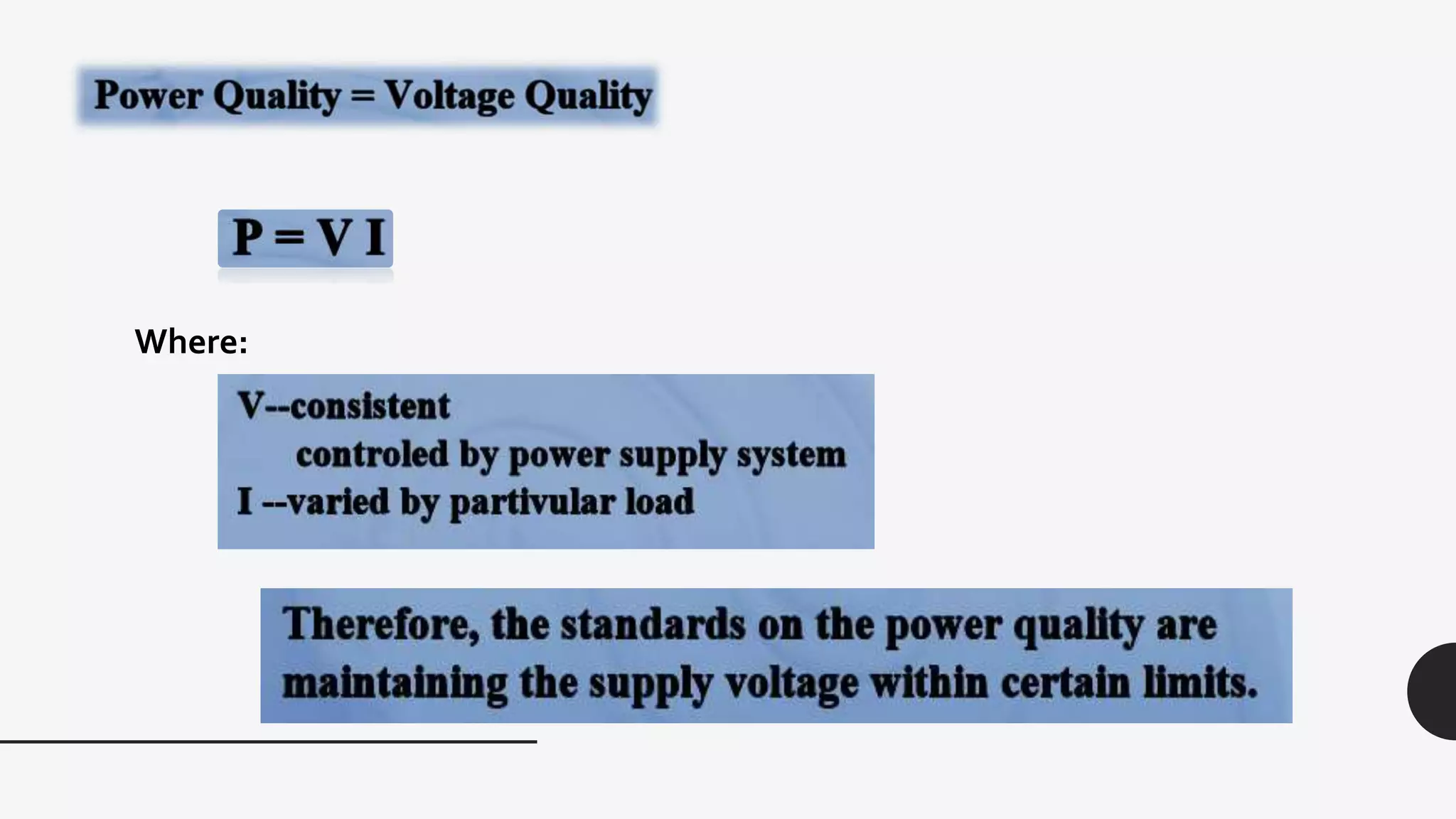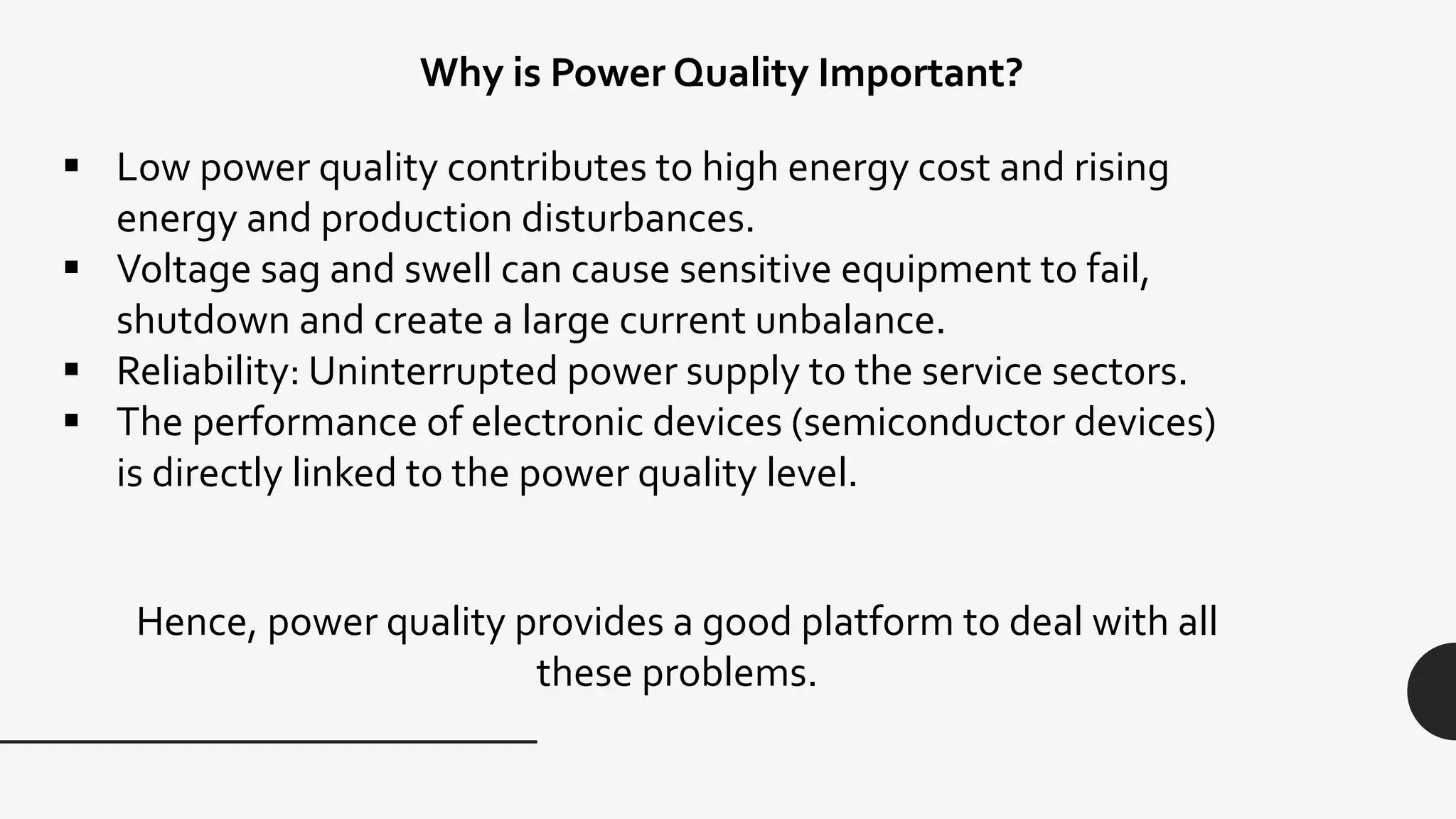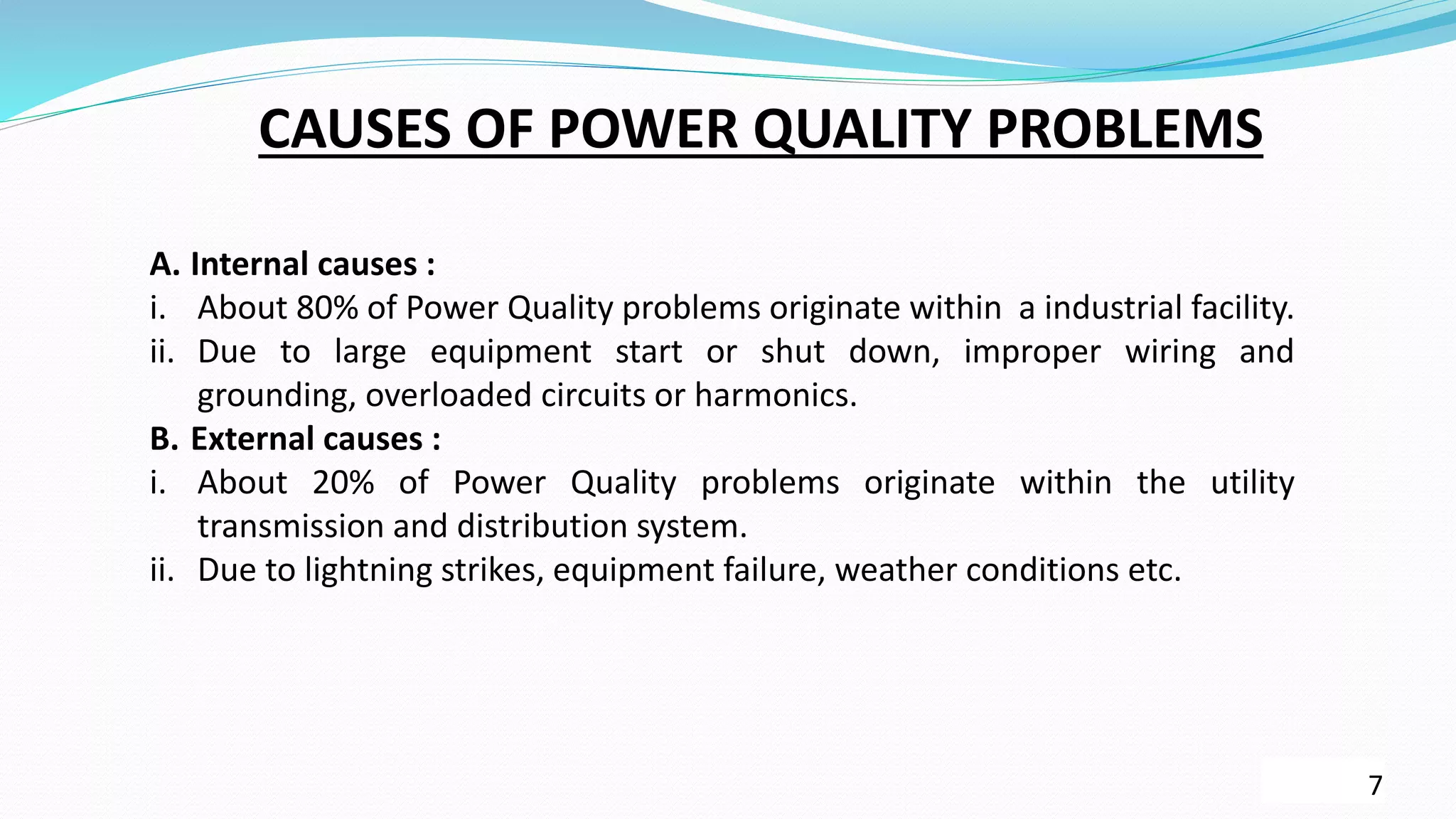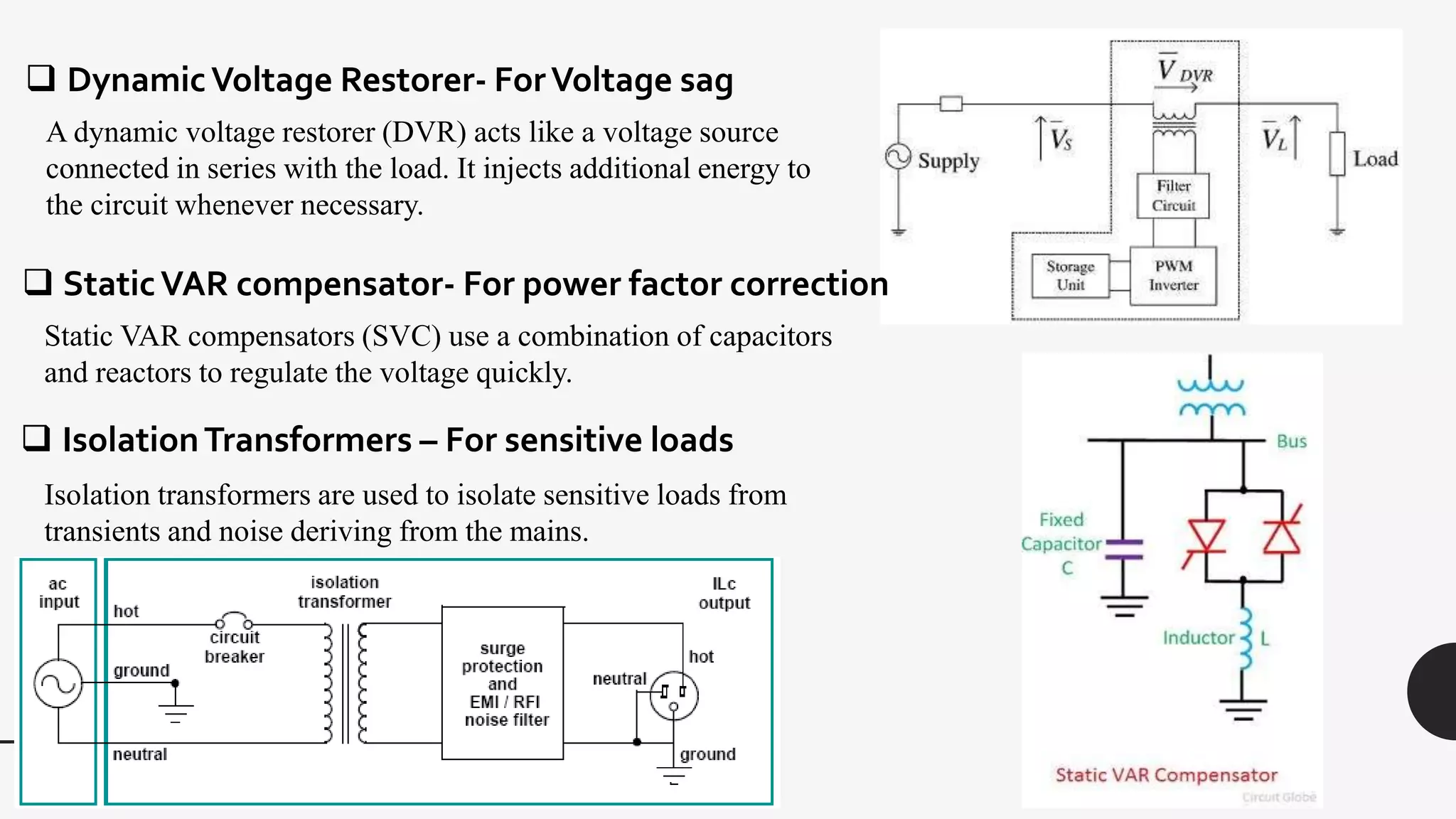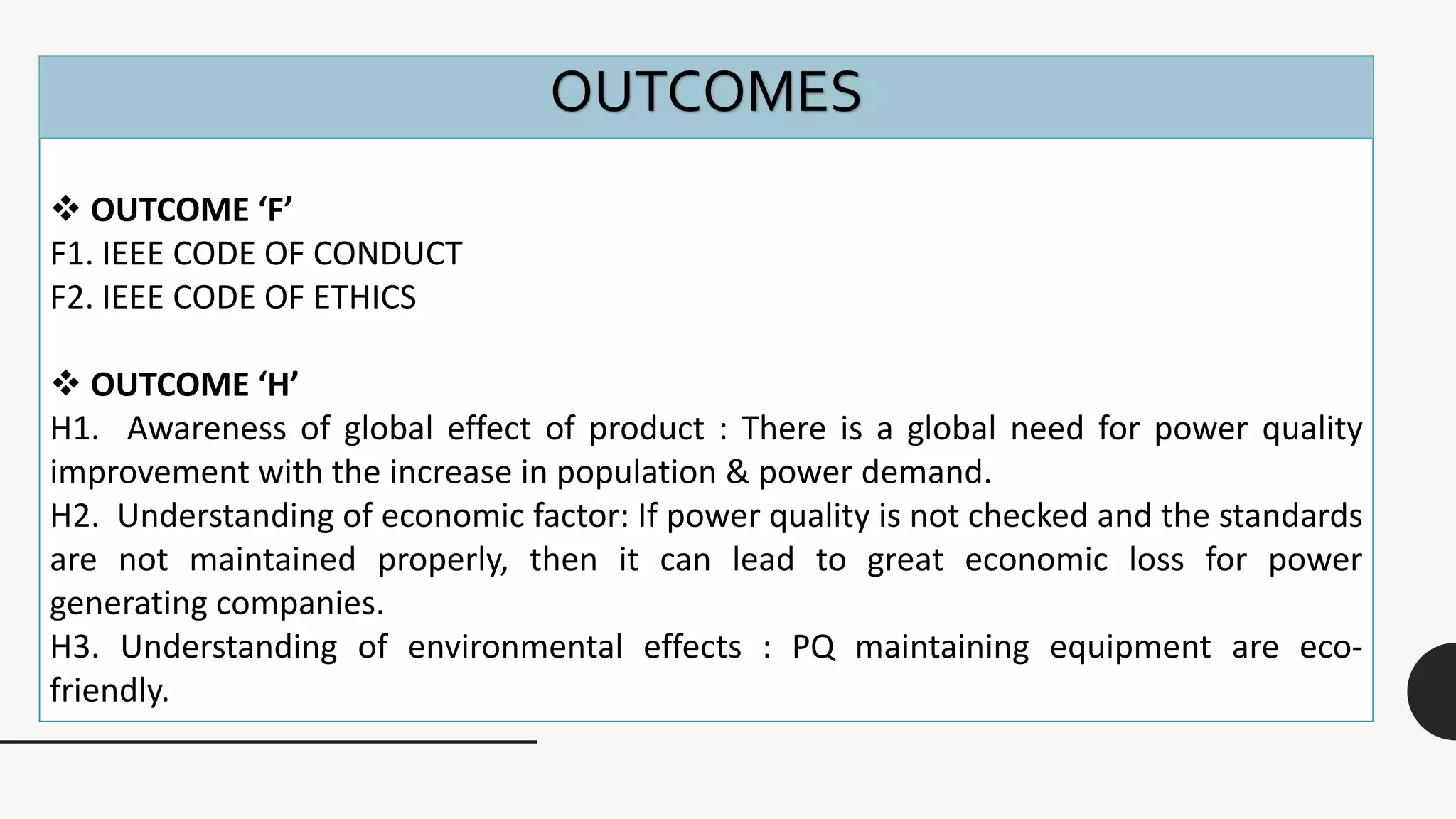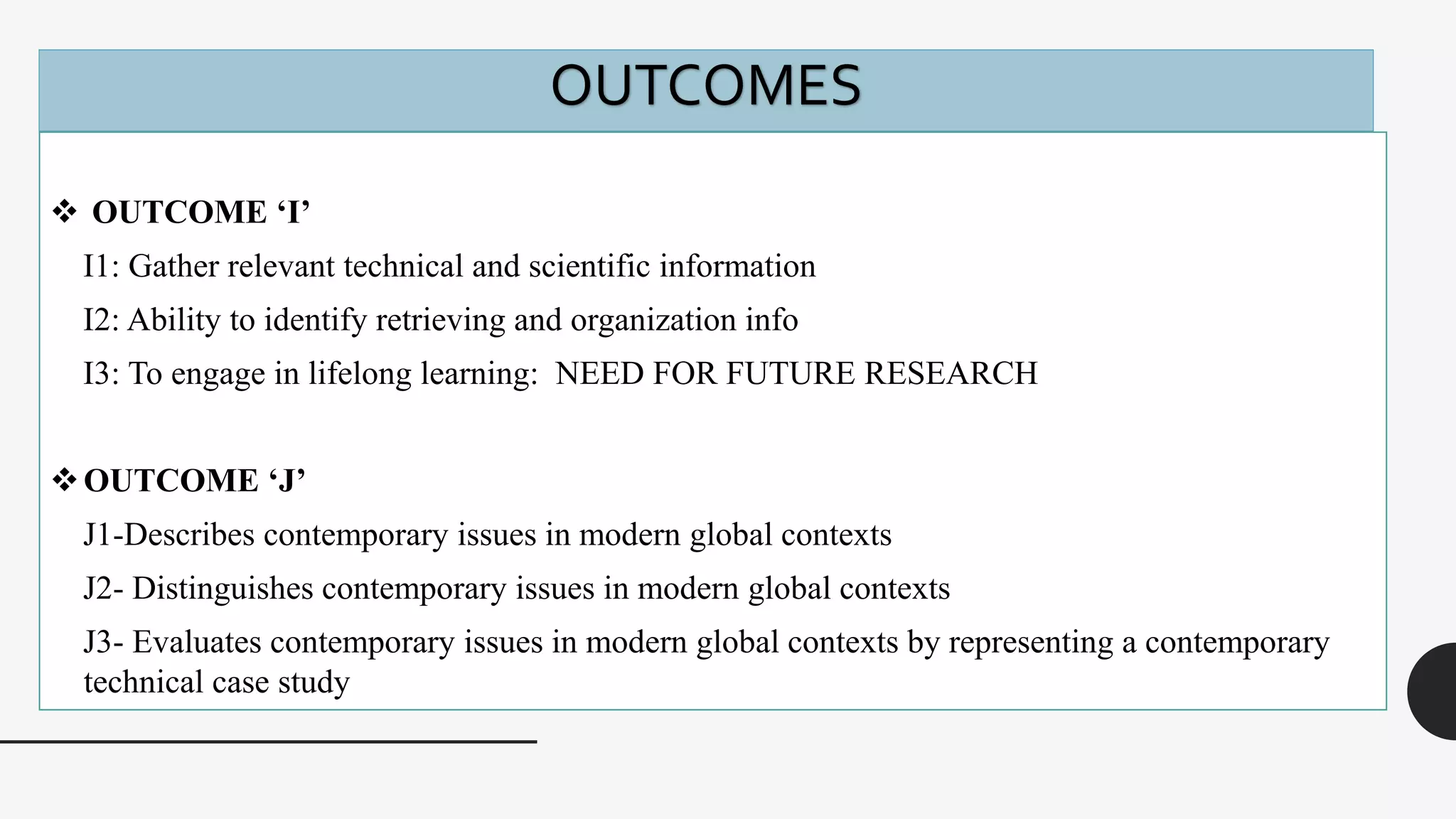Power quality issues arise from disturbances in the electric power supply that can negatively impact equipment. Common issues include voltage sags, swells, interruptions, harmonics, and spikes. Around 80% of problems originate from within industrial facilities due to large loads or improper wiring, while 20% come from external utility issues like weather events. Poor power quality can increase energy costs and cause equipment failures. Monitoring power quality helps identify disturbances and their sources to improve reliability and reduce costs. Various devices like filters, regulators, and compensators can help mitigate different power quality issues. Maintaining high power quality supports the economic operation of power systems and equipment.

